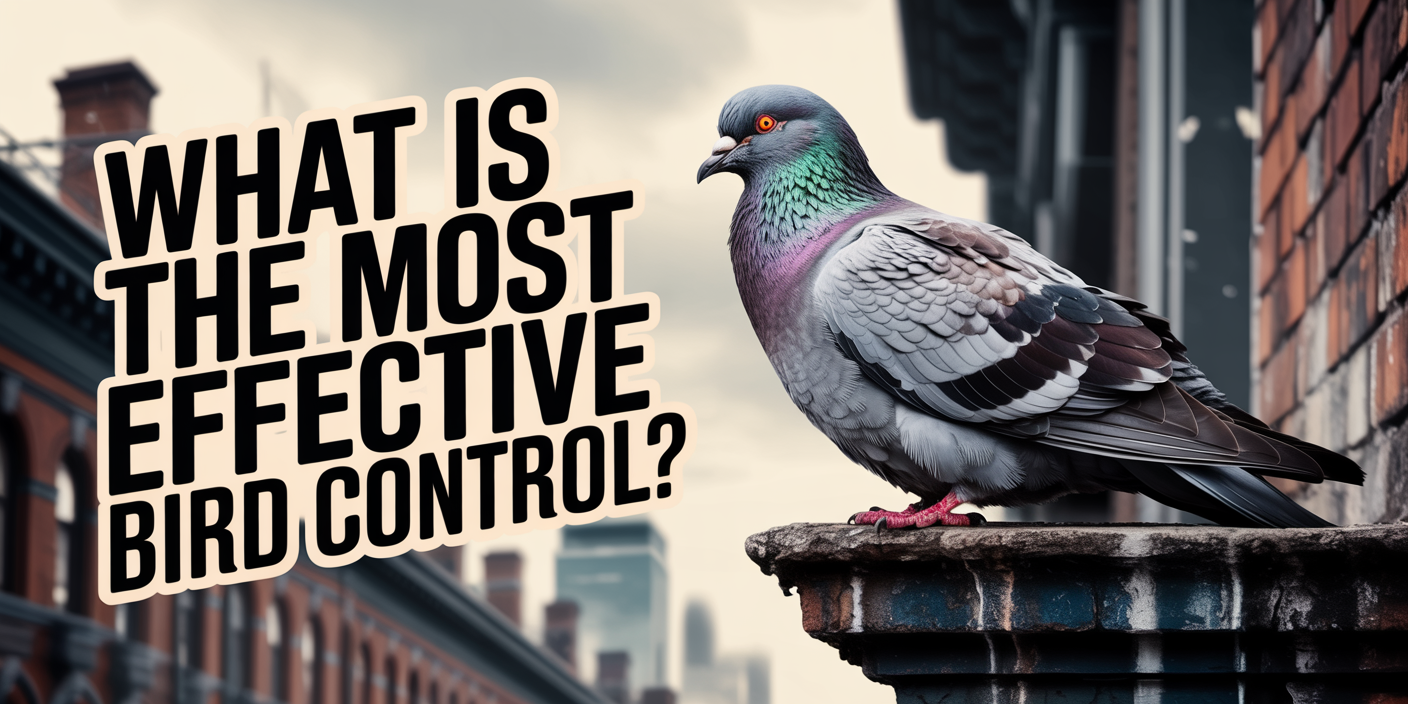The most effective bird control in Phoenix is physical exclusion, like bird netting and spikes, which prevents birds from landing or nesting altogether.
Birds might seem harmless at first, but in Phoenix, they can quickly become a serious problem for both homeowners and businesses. From damaging rooftops and solar panels to leaving behind acidic droppings and constant noise, nuisance birds are more than just annoying—they’re expensive. This guide breaks down the most effective bird control methods that actually work in Arizona’s extreme climate, so you can keep your property clean, safe, and bird-free.
What Makes Bird Control Challenging in Phoenix?
Urban Environments and Ideal Nesting Conditions
Phoenix’s dense urban layout offers birds countless spots to perch, roost, and build nests—especially on flat roofs, solar panels, signage, and ledges. Food sources like uncovered trash bins, backyard gardens, and water from AC units make city life even more attractive for nuisance species like pigeons and grackles.
These man-made structures give birds plenty of safe, elevated nesting zones that are hard to reach and even harder to monitor without the right tools. Once birds have nested successfully, they’re likely to return, making it crucial to act fast and proactively with deterrents that block access entirely.
Desert Climate Considerations
Arizona’s dry, scorching heat presents a unique challenge for traditional repellents. Scent-based products evaporate faster, gels melt or degrade, and plastic deterrents can become brittle under constant sun exposure.
This means any bird control solution in Phoenix needs to be both heat-resistant and low-maintenance to remain effective. If it can’t withstand 110-degree summers, it won’t hold up when you need it most.
What Is the Most Effective Bird Control Method?
Bird Netting
Bird netting is one of the most reliable long-term solutions for keeping birds out of specific areas. It physically blocks access to spaces like balconies, warehouse rafters, solar panels, and storefront signage, making it impossible for birds to nest or roost.
In Phoenix, bird netting holds up well against heat and dust when installed professionally with UV-resistant materials. It’s especially effective for large-scale commercial applications or persistent infestations where other deterrents have failed.
Bird Spikes
Bird spikes prevent birds from landing on ledges, beams, window sills, and rooftop edges by removing the flat surfaces they rely on for perching. They don’t harm the birds—they simply make the area uncomfortable and uninhabitable.
For Phoenix homes and businesses, stainless steel spikes are preferred over plastic due to their heat durability. When installed correctly, they blend in visually and require little maintenance, making them a popular choice for both aesthetics and function.
Electric Shock Track Systems
Shock track systems deliver a mild, harmless electric pulse when birds attempt to land on a treated surface. It trains them to avoid the area altogether without causing injury, making it a humane but highly effective deterrent.
This method works especially well on long ledges, parapets, and decorative architectural features that can’t support netting or spikes. In a hot climate like Phoenix, choose systems specifically rated for UV exposure to ensure long-term reliability.
Visual Bird Deterrents
Reflective Tape and Predator Decoys
Reflective bird tape, spinning rods, and owl or hawk decoys can startle birds and make them think the area is unsafe. These tools reflect sunlight or mimic natural predators, creating just enough discomfort to keep birds away—at least temporarily.
In Phoenix, these visual deterrents can lose effectiveness as birds get used to them or learn they’re fake. For best results, they need to be rotated, repositioned, or paired with sound and physical barriers to prevent birds from settling in.
Laser Bird Deterrents
Laser bird deterrents are designed to disorient birds using movement and light, making them ideal for use during early morning, dusk, or in low-light indoor spaces like warehouses. The unpredictability of the light pattern keeps birds from growing comfortable in one spot.
However, these devices struggle in direct sunlight, which makes them less effective during Phoenix’s bright afternoons. That said, they still serve as a helpful addition to a multi-layered bird control plan when used in shaded areas or indoor facilities.
Sound Devices
Ultrasonic and Sonic Repellers
Sonic bird deterrents play predator calls or bird distress signals to scare off flocks from roosting areas. Ultrasonic models emit high-frequency sounds that are supposed to disturb birds without being heard by humans, though their range and effectiveness vary widely.
In Phoenix, these devices may have limited impact in noisy urban settings where traffic and HVAC systems drown out the sound. Birds can also grow desensitized to the audio over time, especially if the sound pattern doesn’t change regularly.
Best Use Cases for Sound Deterrents
Sound-based deterrents work best in large open spaces like parking structures, rooftops, agricultural areas, or quiet commercial zones. They’re particularly helpful for keeping birds on edge and moving along before they decide to settle in.
To stay effective, these tools should be repositioned every few weeks and ideally combined with physical barriers or visual scares. Used alone, they may offer short-term results, but they rarely solve a persistent bird problem on their own.
Smell or Gel Deterrents
Scent-Based Repellents
Scent-based bird repellents typically use ingredients like peppermint oil, garlic extract, or chili to overwhelm birds’ senses and drive them away. These are often marketed as safe, non-toxic options for gardens, patios, and building ledges.
In Phoenix’s intense heat, however, these scents tend to evaporate quickly, losing their potency within hours. Without constant reapplication, especially during summer, scent repellents won’t hold up as a reliable, long-term solution.
Sticky Gels and Tactile Deterrents
Sticky gels make surfaces unpleasant for birds to land on, using a gooey texture that discourages perching. They’re often used on narrow ledges, beams, or signage where installing netting or spikes is difficult.
While they can be effective for light bird activity, Phoenix’s heat and dust can quickly degrade the material, turning it into a melted mess or making it less sticky over time. For that reason, gels require regular maintenance and are best suited for low-pressure areas or as a backup option.
Call AAAC Wildlife Removal of Phoenix for Proven Bird Control
Tired of dealing with noisy pigeons, bird droppings on your solar panels, or nests tucked into your roof tiles? Let the experts at AAAC Wildlife Removal of Phoenix take care of it with safe, effective, and humane bird control solutions designed for Arizona’s harsh climate.
Our team specializes in long-term exclusion methods like bird netting, spikes, and custom deterrent systems that actually work. Call us today to schedule an inspection and get back to enjoying your property—clean, quiet, and bird-free.
When it comes to bird control in Phoenix, not all solutions are created equal. The most effective methods—like bird netting, spikes, and electric shock systems—focus on exclusion and durability, which is exactly what you need in a climate that punishes quick fixes.
If birds have turned your home or business into a hangout spot, don’t waste time with short-term tricks. Invest in proven strategies and call in local professionals who understand Arizona’s unique challenges and regulations.




